Art World
Step Inside Artist Dale Chihuly’s Stunning Seattle Studio, Filled With an Epic Antiques Collection and His Otherworldly Glass Forms
A new book from the artist takes us inside his museum-like studio, the Boathouse.
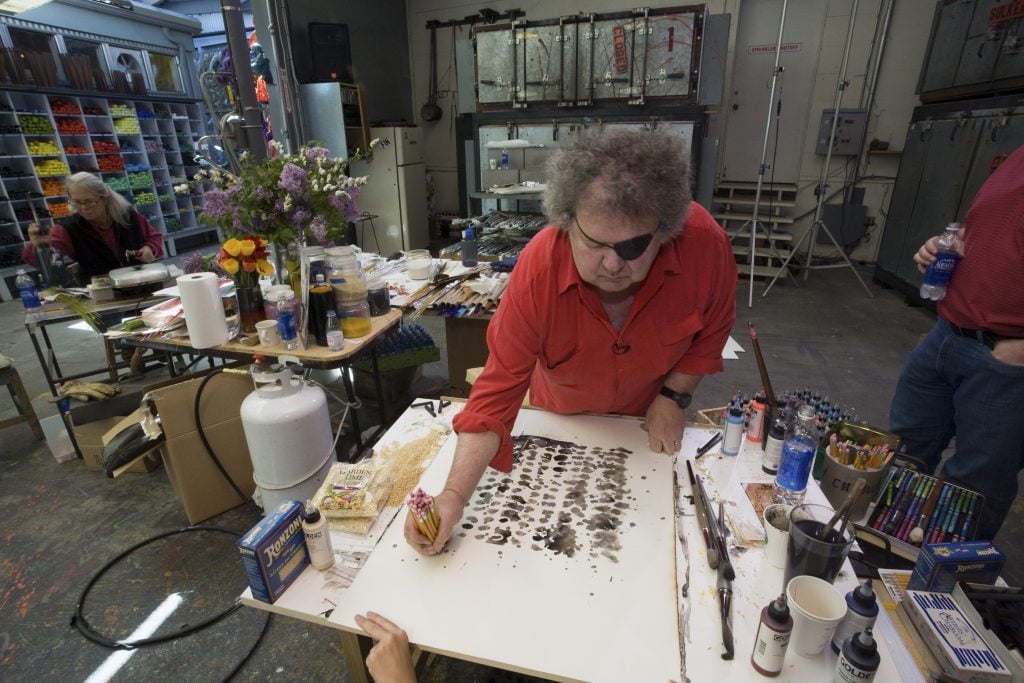
A new book from the artist takes us inside his museum-like studio, the Boathouse.

Sarah Cascone

You may think you know all there is to know about Dale Chihuly, master of glass, whose delicate handblown creations take the medium to the realm of fine art.
But stepping inside the Boathouse, the former Seattle boatbuilding workshop on Lake Union that has served as the headquarters of his artistic production since 1989, reveals a museum-like space that celebrates not only Chihuly’s curvaceous, colorful glass forms, but the artist’s many decades of collecting both art and antiques. And while you can’t visit, you can get a taste of the space in a new book, The Boathouse: The Artist’s Studio of Dale Chihuly, from the University of Washington Press.
From the street, the Boathouse is a nondescript 25,000-square-foot box with gray corrugated metal siding. Inside, Chihuly has filled every nook and cranny of the space with a cornucopia of visual delights, from an 85-foot-long banquet table made from a single slab of a 500-year-old Douglas fir set beneath his signature Murano-inspired glass chandeliers to the floor-to-ceiling shelving in the downstairs bathrooms that display the covers of vintage children’s books like The Hardy Boys.
Something of a collector of collections, Chihuly has—in one room alone—antique cast-iron dog doorstops, Edward S. Curtis photogravure portraits of Native American women, some 300 Pendleton blankets, and floor-to-ceiling shelves filled with Native American baskets, as well as glass forms by the artist that they’ve inspired. And that’s just a few of the untold treasures that await around every corner.
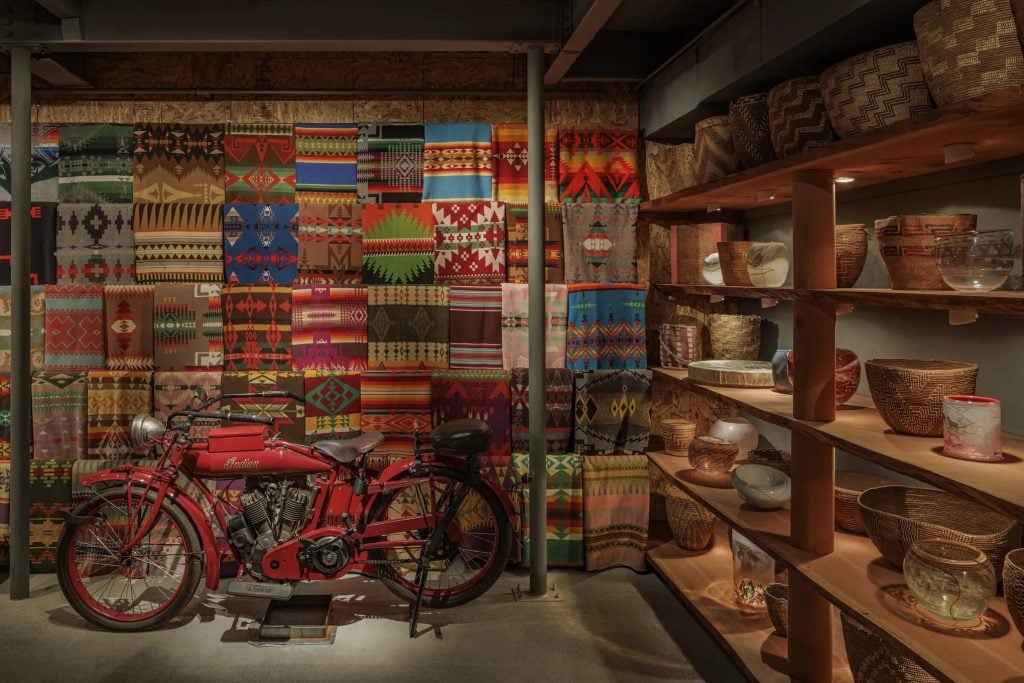
Pendleton blankets, a 1914 Indian Motorcycle, Native American baskets, and Dale Chihuly glass forms they inspired in the Northwest Room at the Boathouse, the artist’s Seattle studio. Photo by Nathaniel Willson, ©2023 Chihuly Studio.
For many years, the Boathouse served as both home and studio for Chihuly and his wife, Leslie Jackson Chihuly, who serves as president and CEO of Chihuly Studio—and also handles press for the interview-shy artist, who has bipolar disorder.
“It’s kind of a living art piece itself,” Jackson Chihuly told Artnet News. “He’s basically designed every inch of that place.”
Born in 1941, Chihuly actually got his start studying interior design at the University of Washington in Seattle, before enrolling in the glass program at the University of Wisconsin in 1965. A Fulbright Fellowship allowed him to work at Venini glass factory in Venice in 1968, learning techniques he would bring back with him to Washington, where he cofounded the Pilchuck Glass School in 1971.
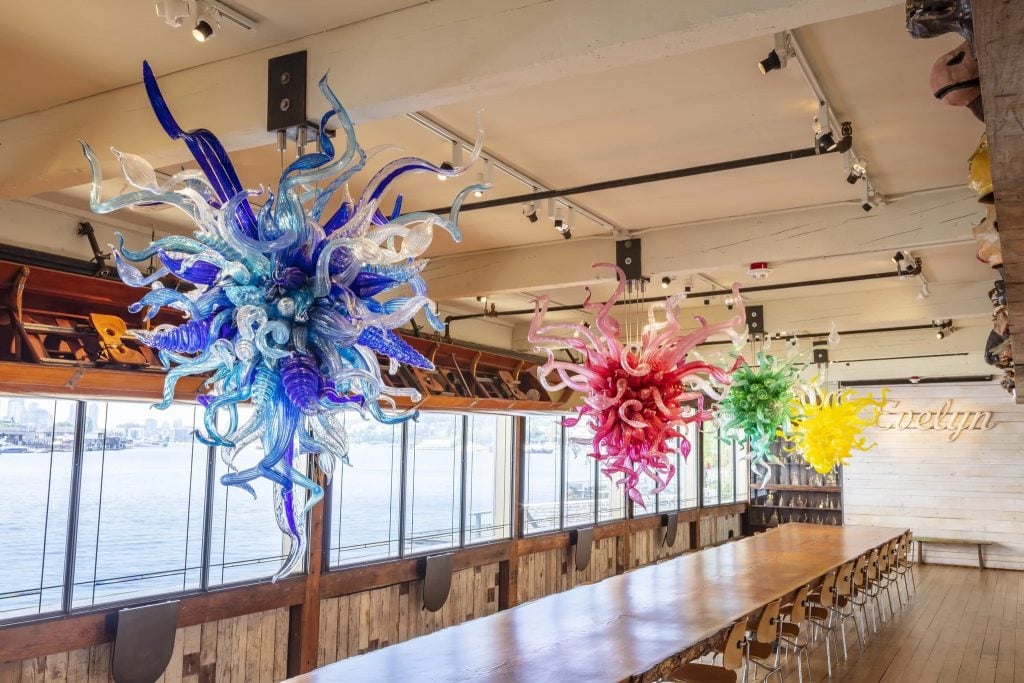
Dale Chihuly chandeliers and an Algonquin Tribe hand-carved birch canoe over a 85-foot-long Douglas fir table in the Evelyn Room at the Boathouse, the artist’s Seattle studio. Photo by Nathaniel Willson, ©2023 Chihuly Studio.
A leader in avant-garde glass art ever since, Chihuly had a breakthrough moment in 1995, when he staged “Chihuly Over Venice,” installing his chandeliers amid the city’s bridges and canals. Major exhibition have followed, many at botanical gardens but also at the de Young Museum in San Francisco; the Museum of Fine Arts, Boston; the Royal Ontario Museum in Toronto; and the Crystal Bridges Museum of American Art in Bentonville, Arkansas.
Undoubtedly, Chihuly helped elevate glass blowing from a functional craft to an art. But in some ways, his incredible success and high-profile commissions, like the flowery glass ceiling at Las Vegas’s Bellagio casino, have overshadowed his artistic achievements, reducing his work to the realm of the decorative or even kitsch.
When Artnet News visited his office, a 10-minute drive from the Boathouse, the team was in the process of constructing an elaborate blue and white glass tower designed to sit inside a staircase on a private yacht.
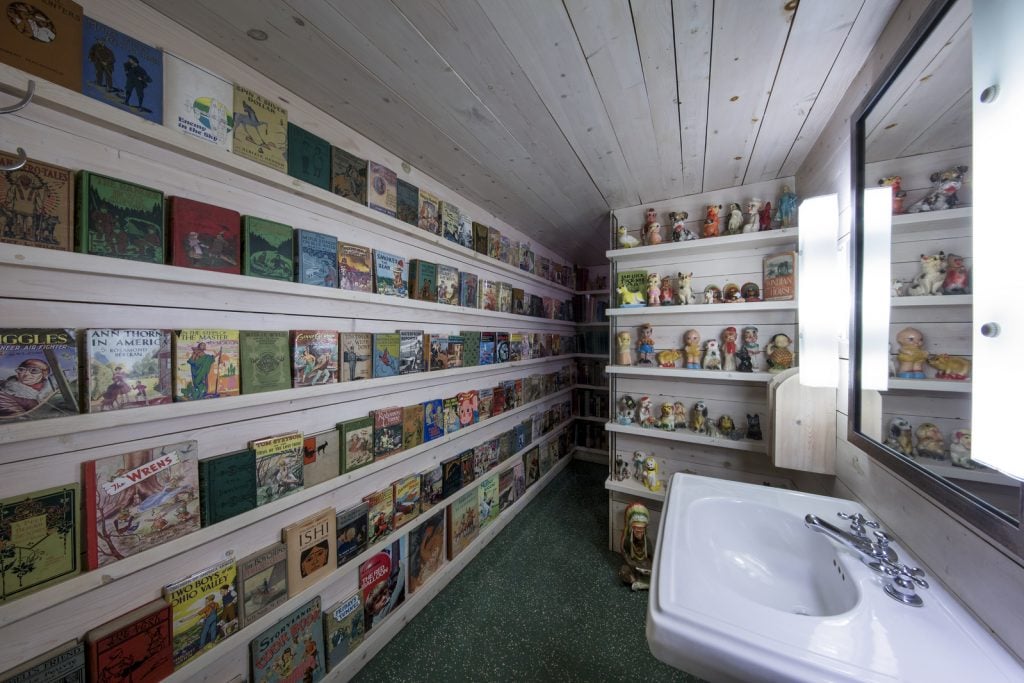
Vintage books line the downstairs bathrooms’ walls at the Boathouse, Dale Chihuly’s Seattle studio. Photo by John Gaines, ©2023 Chihuly Studio.
In contrast, Chihuly’s own studio provides a totally different context for his oeuvre, as part of a gesamtkunstwerk in which every corner is infused with the artist’s unique vision. (Chihuly and his wife hope the Boathouse will someday be open to the public as part of the Chihuly Foundation.)
Some of the most stunning areas of the space are where Chihuly has incorporated his work into the very architecture—a sunken bathtub with jagged glass crystals embedded in the basin, and a functional aquarium in a darkened room with tropical fish swimming amid otherworldly glass “coral” illuminated by black light. (The show-stopping indoor swimming pool, meanwhile, which has some 400 glass sculptures installed beneath the water, is currently closed for repair.)
At the heart of the studio is the hotshop where the Chihuly produces most of his glass—although he has had long-term relationships with different facilities internationally over the years, blowing glass in France, Japan, the Czech Republic, Finland, and Israel.
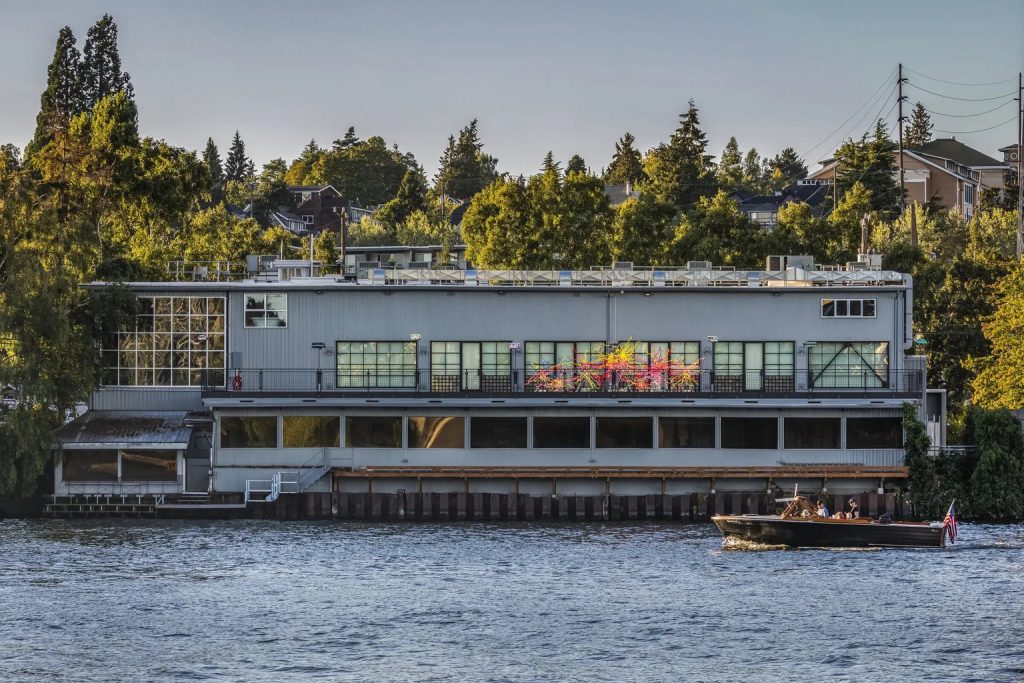
The Boathouse, Dale Chihuly’s Seattle studio, in 2016. Photo by Nathaniel Willson, ©2023 Chihuly Studio.
The walls of the hotshop are lined with colored glass, in solid rods or crushed or powered form—each piece starts with clear glass, to which the color is added. There are also rows of samples of what each color looks like once blown, arrayed next to some of the metal tools used to create the various undulating and spherical shapes.
The artist’s team, which varies in size based on what projects are in the works, works under the Chihuly close supervision. He got in a serious car accident in 1976, which cost him his sight in his right eye. This loss of vision and depth perception made working with molten glass more dangerous. Three years later, he dislocated his shoulder while bodysurfing, and was no longer able to lift the heavy glass blowing pipe.
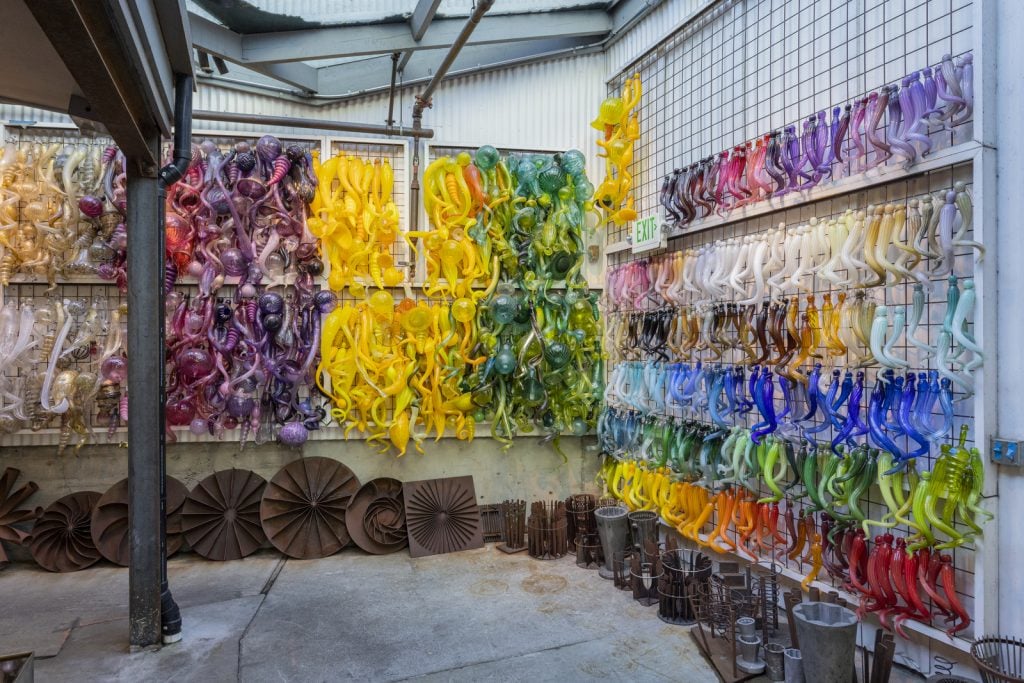
Glass samples and optic molds at the hotshop at the Boathouse, Dale Chihuly’s Seattle studio. Photo by Nathaniel Willson, ©2023 Chihuly Studio.
Instead, Chihuly began creating works on paper to help communicate his vision to the studio, a workflow that continues to this day.
Those large-scale paintings are among the works that decorate the walls of the Boathouse, hung below a unique collection of giant papier-mâché masks and above the banquet table in what’s been dubbed the Evelyn Room, after a large cursive sign purchased at a Tacoma thrift store. Chihuly has also translated some of his paintings into glass light boxes, displayed with two of his 1950s sports cars in the Tin Room, named for its tin-paneled walls.
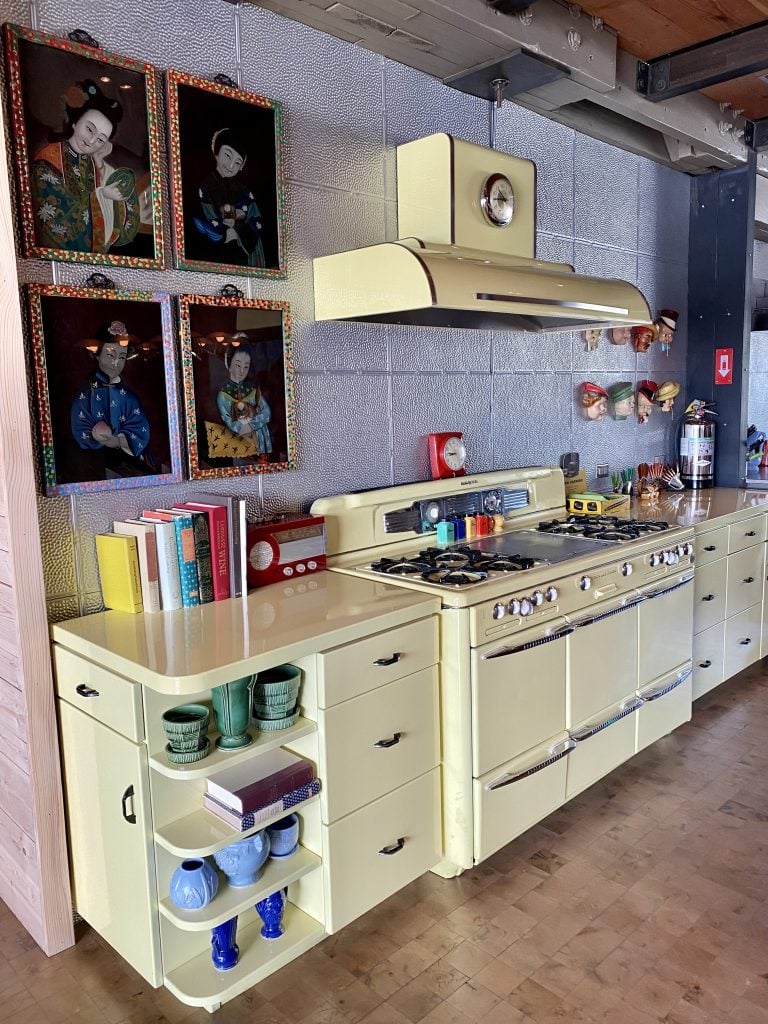
The kitchen at the Boathouse, Dale Chihuly’s Seattle studio. Photo by Sarah Cascone.
Upstairs, an entire wall is given over to functional black and yellow dartboards—a work by Jacob Dahlgren. (Other artists on display include David Hockney, Michael Lawson, and Italo Scanga, a close friend who was such a frequent houseguest that the downstairs bedroom is named in his honor.) There’s a spacious kitchen, and a sun-dappled library with a spiral staircase leading up to the Chihulys’ lofted bedroom.
You never know what you’ll find around the next corner, from Pez dispensers to vintage accordions—and it’s all just steps not only from the busy hotshop, but also the bustling waters of Lake Union.
Chihuly, who once worked on an Alaska fishing boat, appreciates being able to see the boats going about their business, a reminder of Seattle’s industrial history, and also the Indigenous people who have called this landscape home for thousands of years. And for nearly 25 years, the lake has been a hotbed of artistic experimentation, where Chihuly has crafted his most innovative work—and carefully curated a most inspirational space in which to carry out his practice.
See more photos of the Boathouse below.
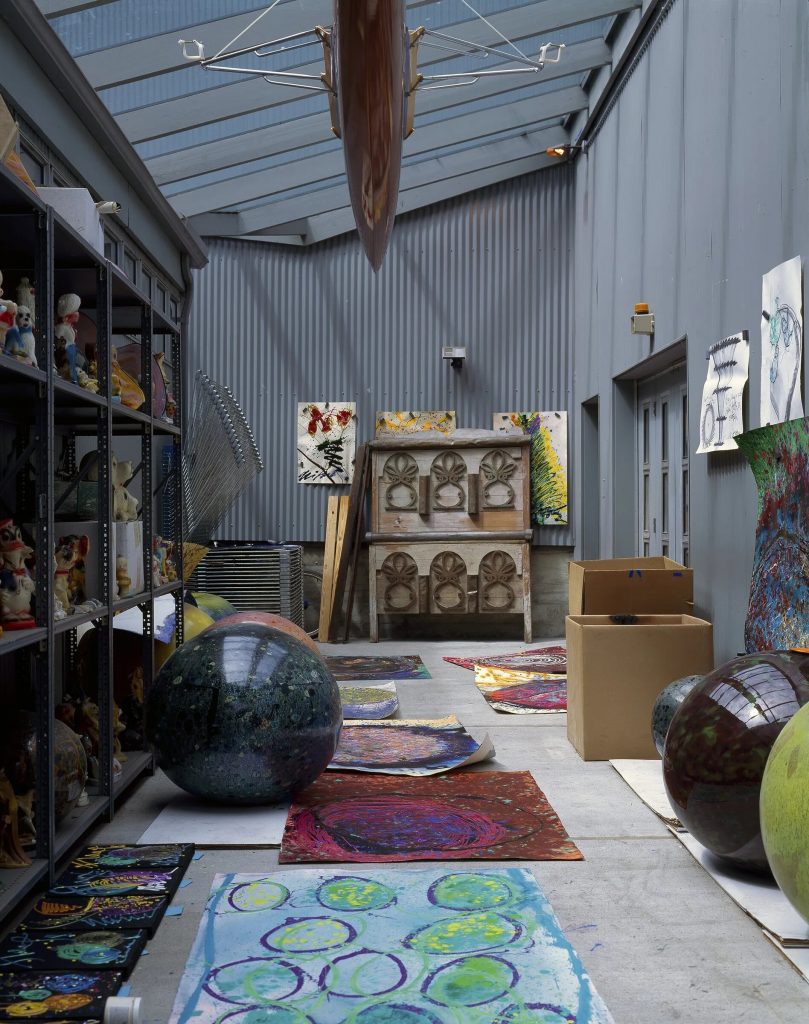
The Alley at the Boathouse, Dale Chihuly’s Seattle studio. Photo by John Gaines, ©2023 Chihuly Studio.
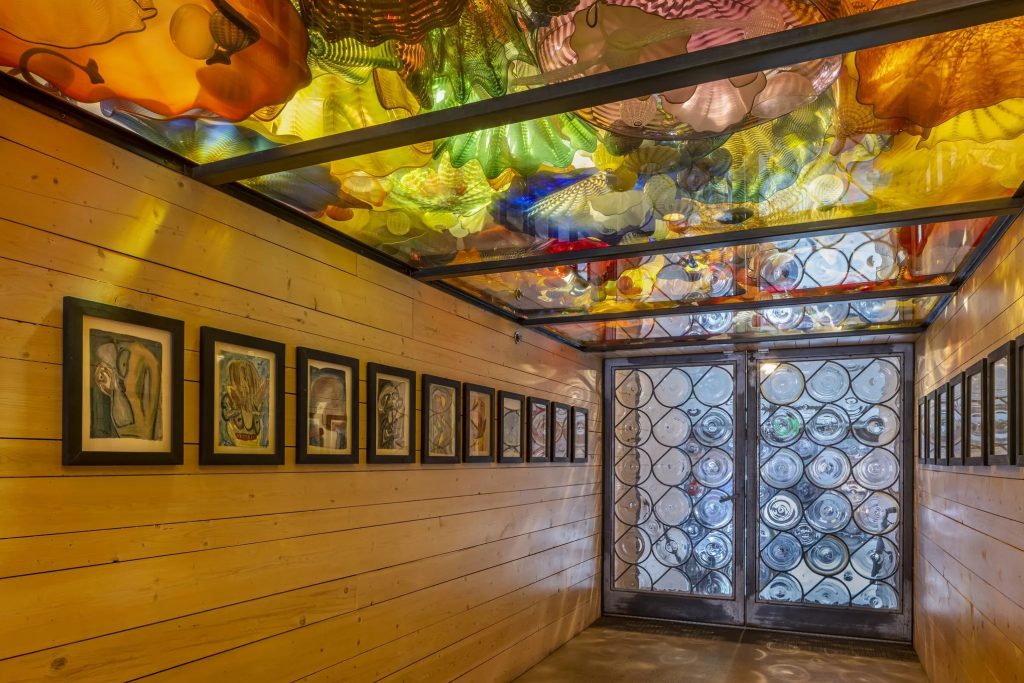
The Rondel doors, a Persian Ceiling, and work by Michael Lawson at the Boathouse, Dale Chihuly’s Seattle studio. Photo by Nathaniel Willson, ©2023 Chihuly Studio.

The Italo Room at the Boathouse, Dale Chihuly’s Seattle studio. Photo by Sarah Cascone.
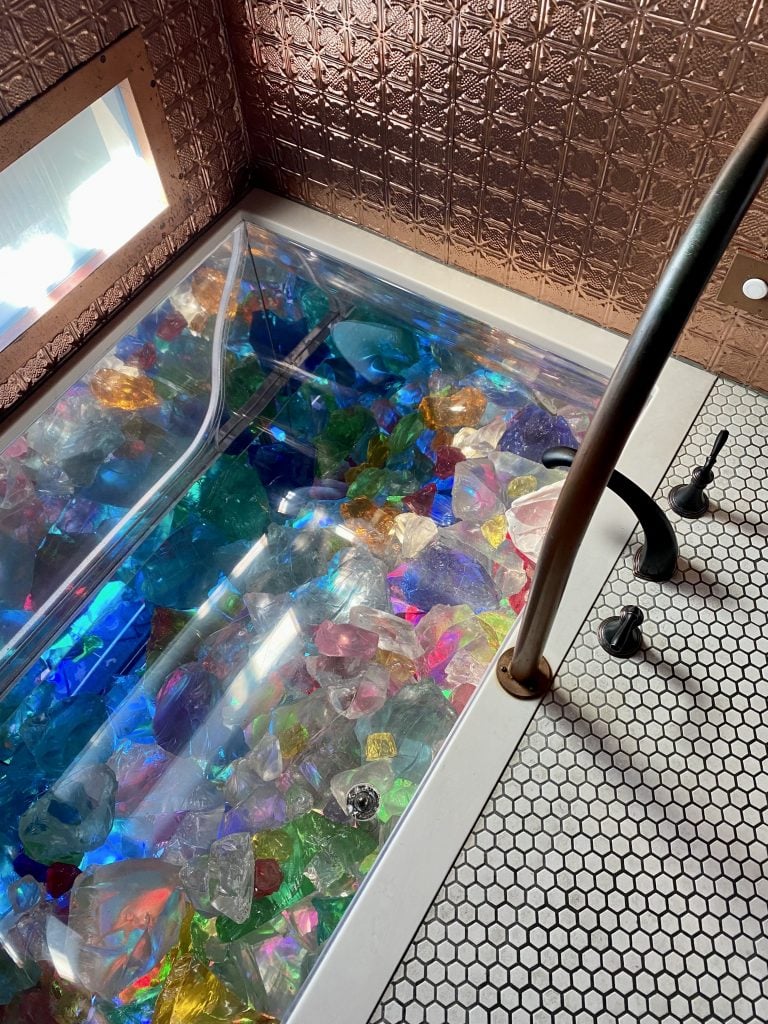
Glass sculpture in a bathtub at the Boathouse, Dale Chihuly’s Seattle studio. Photo by Sarah Cascone.

Dale Chihuly chandeliers and paintings, as well as giant papier-mâché masks and an Algonquin Tribe hand-carved birch canoe, over a 85-foot-long Douglas fir table in the Evelyn Room at the Boathouse, the artist’s Seattle studio. Photo by Nathaniel Willson, ©2023 Chihuly Studio.

Dale Chihuly chandeliers and paintings, as well as giant papier-mâché masks and an Algonquin Tribe hand-carved birch canoe, over a 85-foot-long Douglas fir table in the Evelyn Room at the Boathouse, the artist’s Seattle studio. Photo by Nathaniel Willson, ©2023 Chihuly Studio.
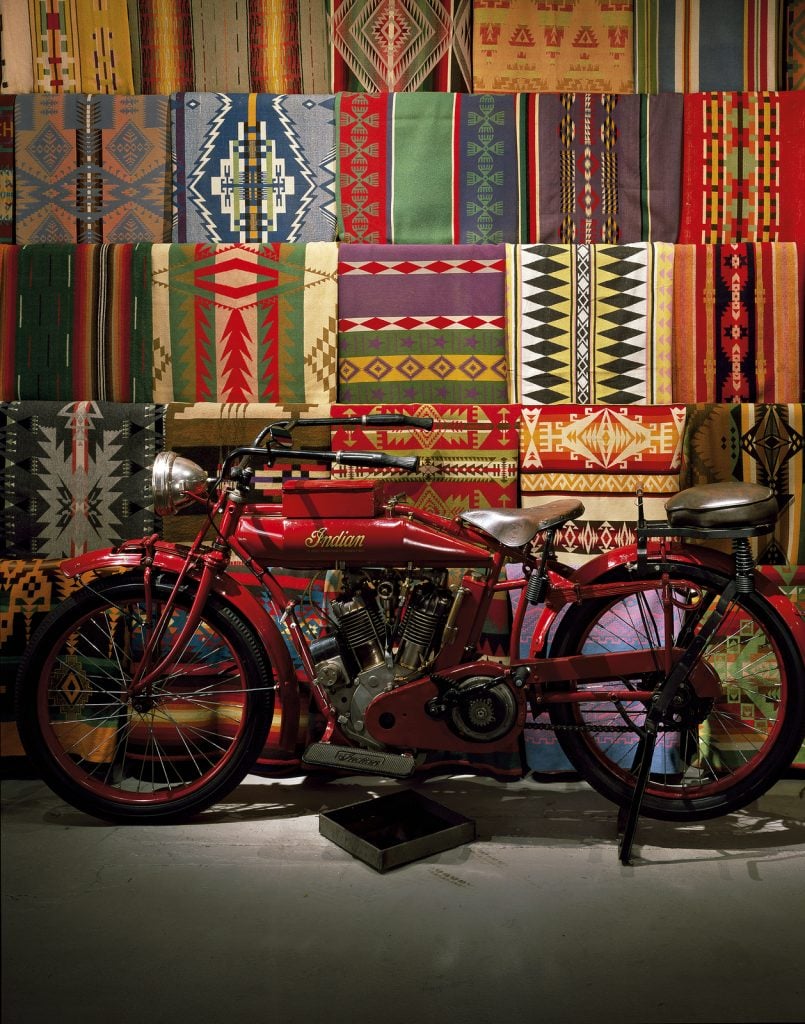
Pendleton blankets and a 1914 Indian Motorcycle in the Northwest Room at the Boathouse, Dale Chihuly’s Seattle studio. Photo by Nathaniel Willson, ©2023 Chihuly Studio.
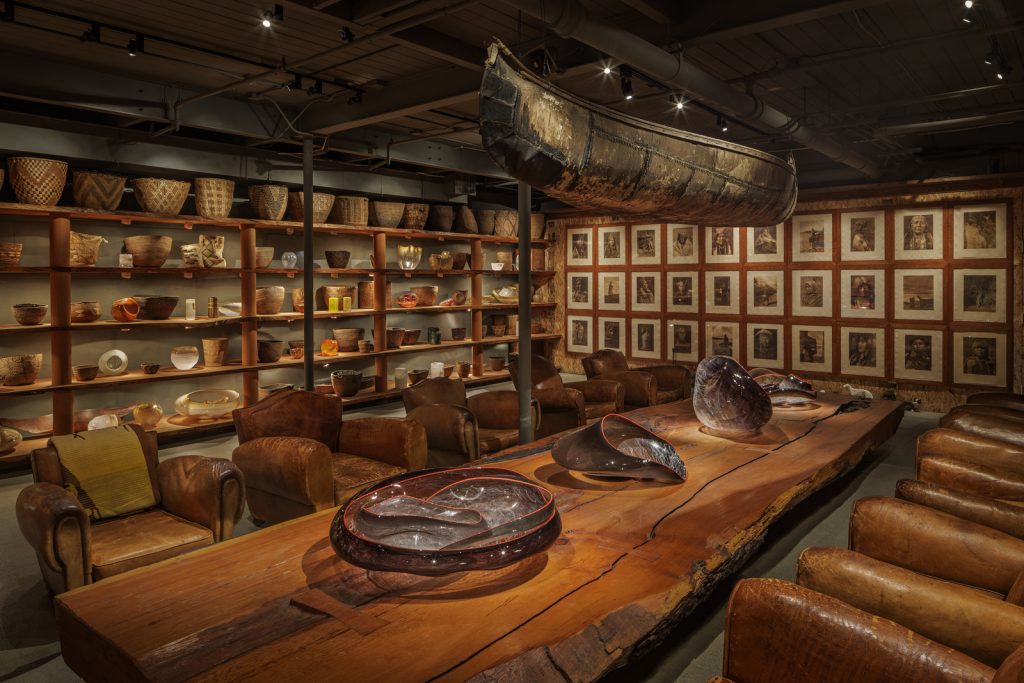
Dale Chihuly glass on a 1,100-year-old, 2,100-pound Douglas Fir table, Native American baskets, and Edward S. Curtis photogravure portraits of Native American women in the Northwest Room at the Boathouse, the artist’s Seattle studio. Photo by Nathaniel Willson, ©2023 Chihuly Studio.
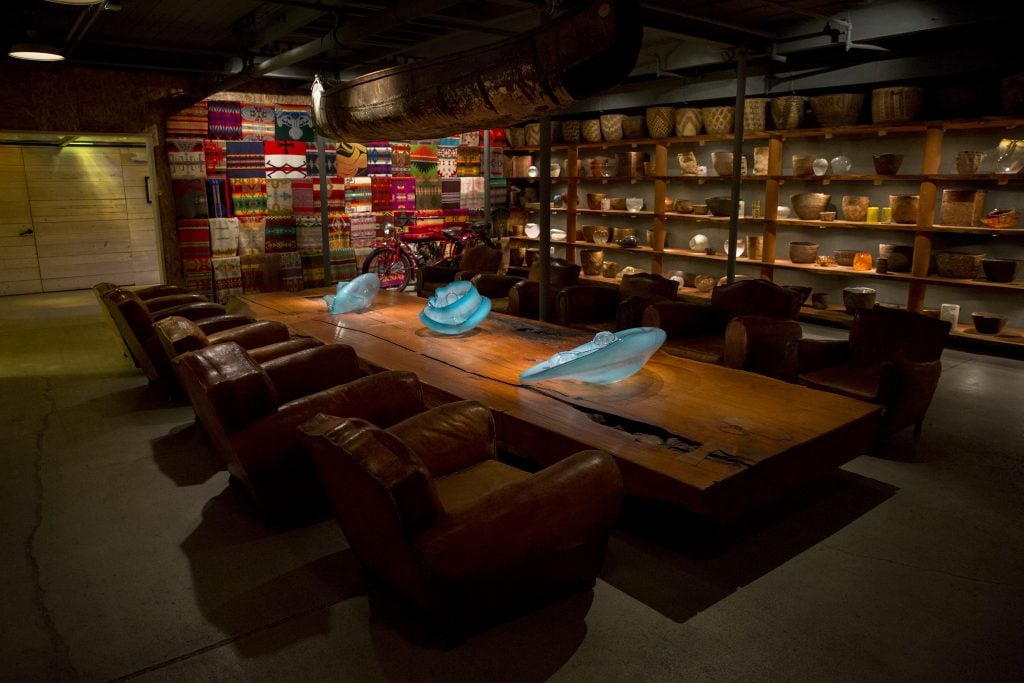
Dale Chihuly glass on a 1,100-year-old, 2,100-pound Douglas Fir table, an Algonquin Tribe hand-carved birch canoe, Native American baskets, and Pendleton blankets in the Northwest Room at the Boathouse, the artist’s Seattle studio. Photo by Nathaniel Willson ©2023 Chihuly Studio.
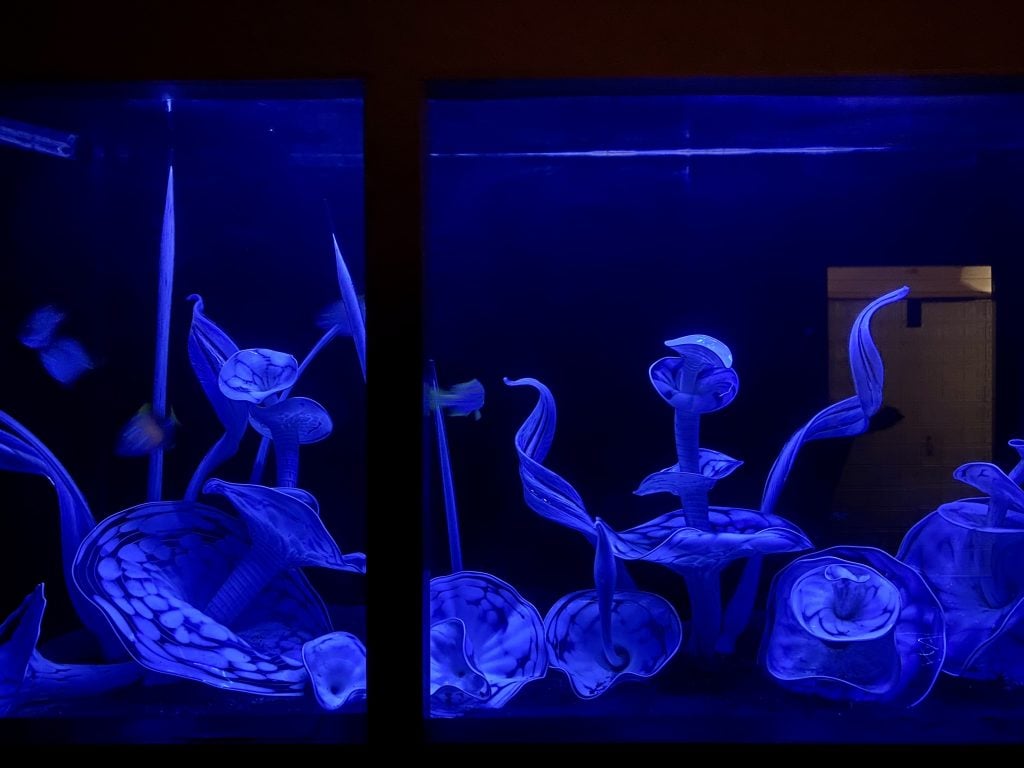
Glass sculpture in the aquarium at the Boathouse, Dale Chihuly’s Seattle studio. Photo by Sarah Cascone.
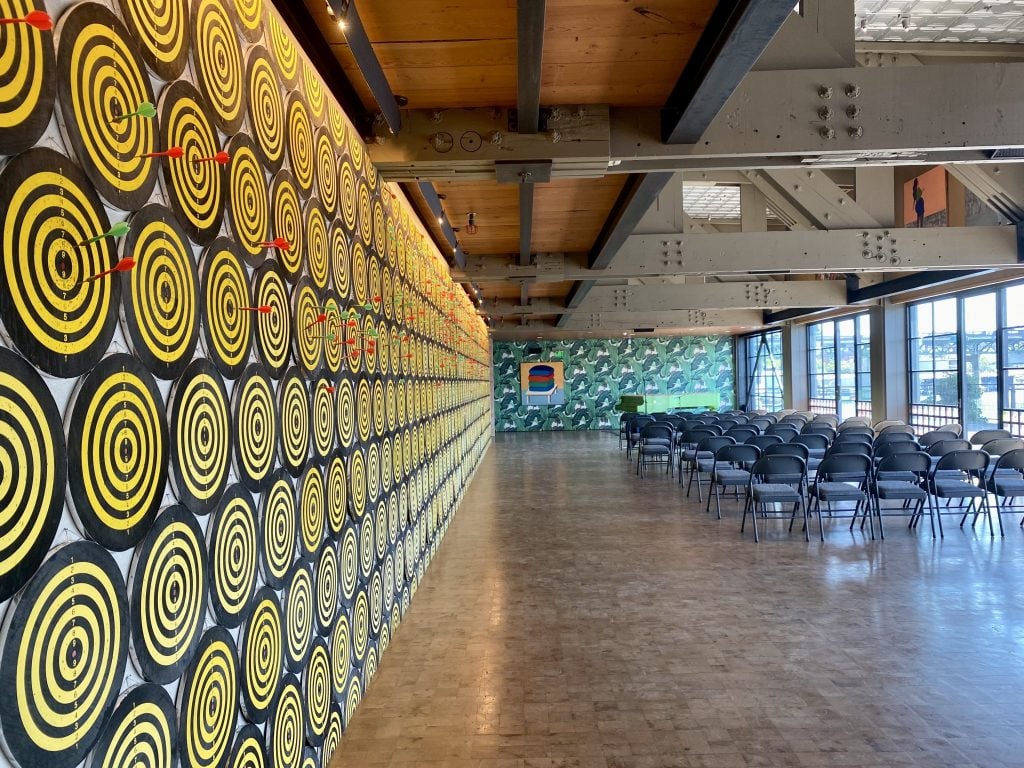
Jacob Dahlgren, I, the world, things, life, a wall of dartboards, at the Boathouse, Dale Chihuly’s Seattle studio. Photo by Sarah Cascone.
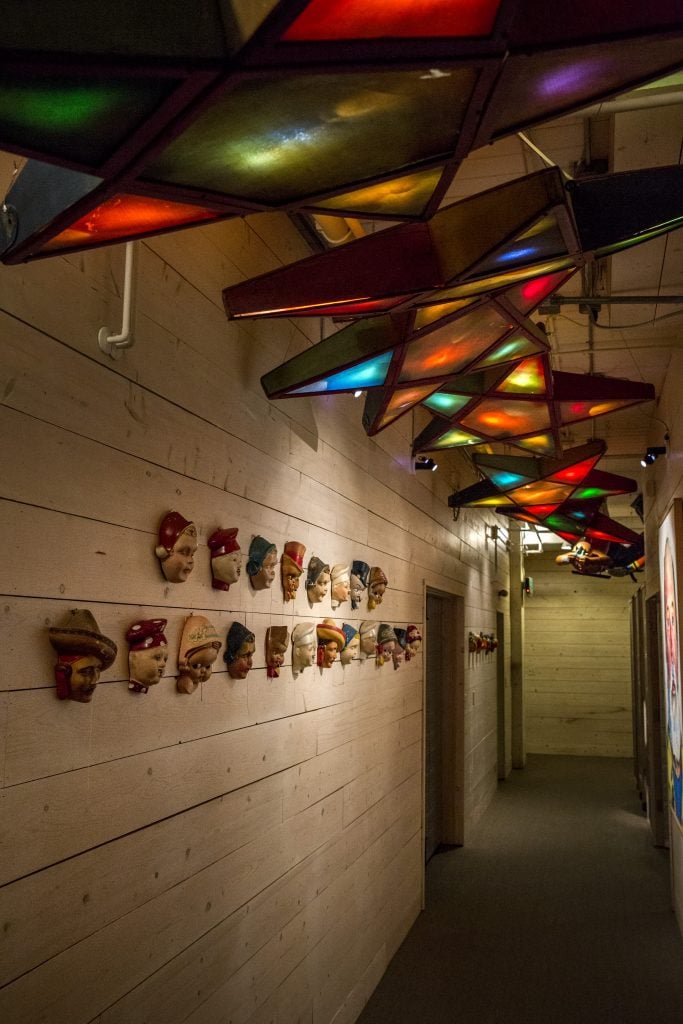
Dance-hall star lights from the 1920s and vintage string dispensers at the Boathouse, Dale Chihuly’s Seattle studio. Photo by John Gaines, ©2023 Chihuly Studio.
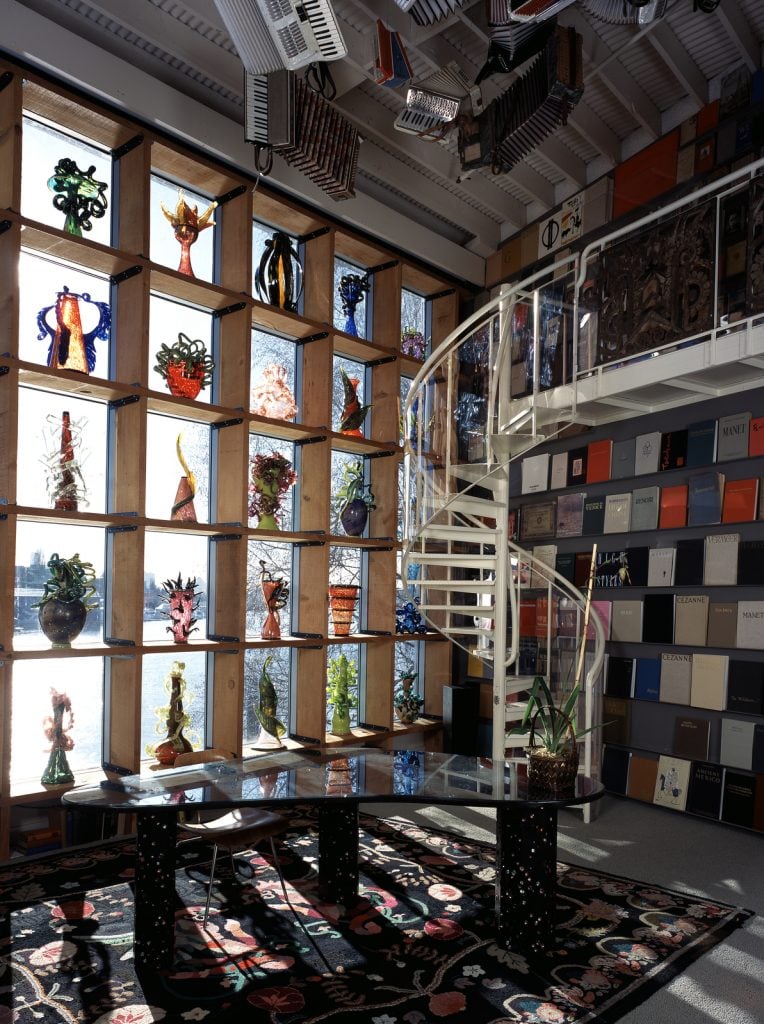
The library in the Boathouse, Dale Chihuly’s Seattle studio. Photo by Nathaniel Willson ©2023 Chihuly Studio.
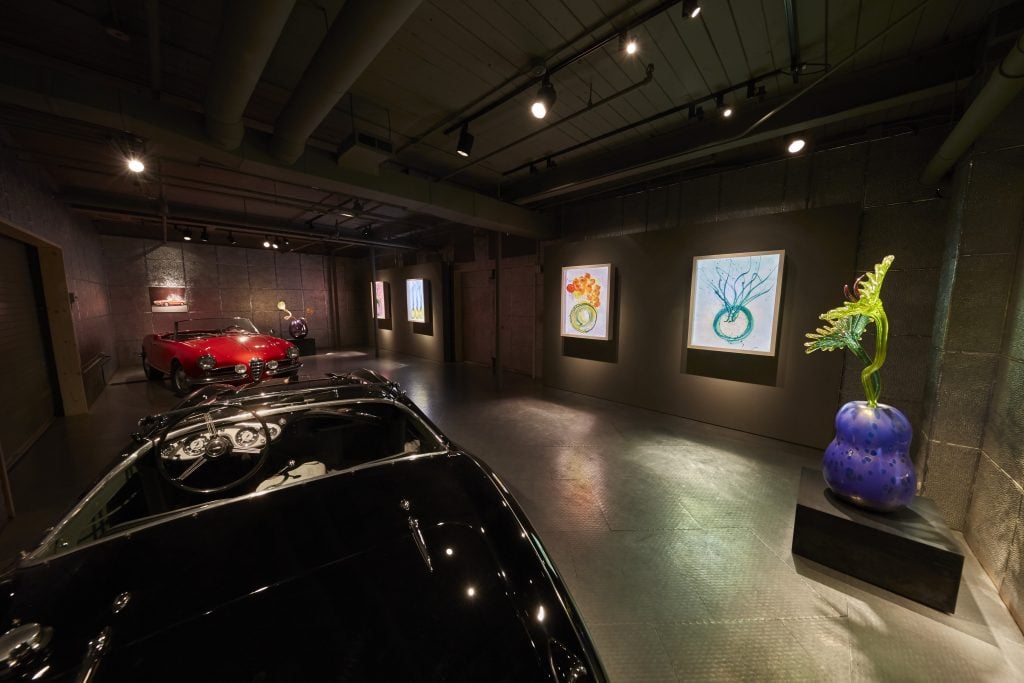
The Tin Room at the Boathouse, Dale Chihuly’s Seattle studio. Photo by Nathaniel Willson, ©2023 Chihuly Studio.
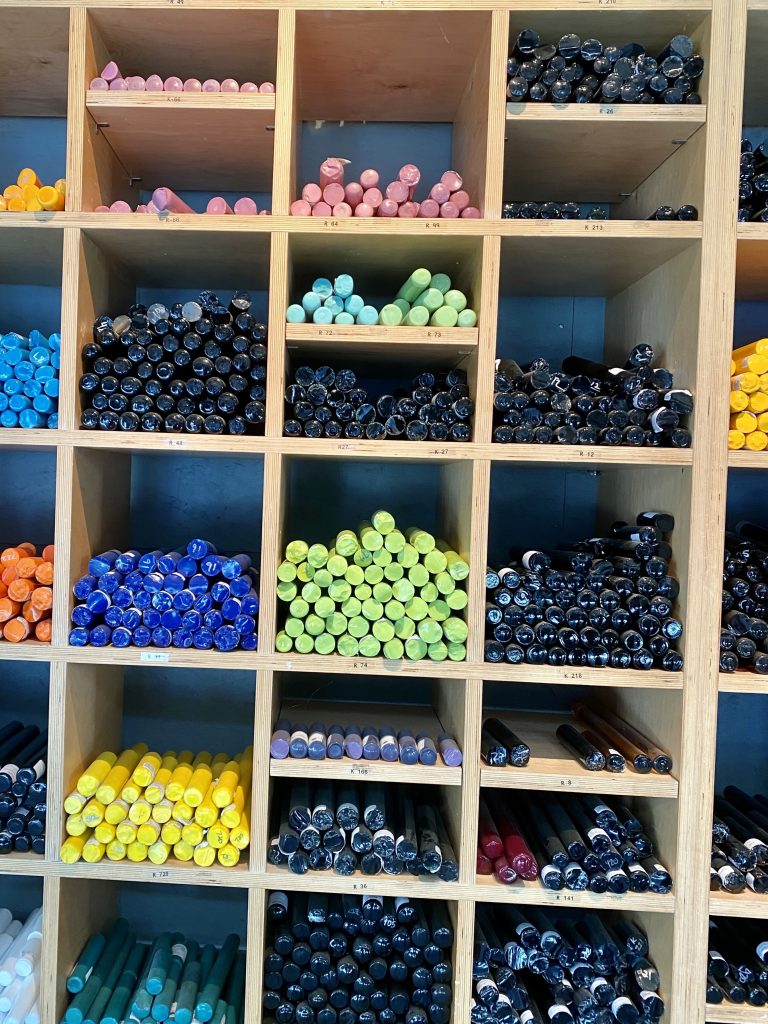
Colored glass rods at the Boathouse, Dale Chihuly’s Seattle studio. Photo by Sarah Cascone.